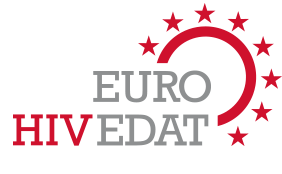Improving Quality
Quality improvement is distinct from and complements monitoring and evaluation. Structured quality improvement means reflecting on all phases and aspects of a project or intervention in order to identify areas for improvement. Monitoring and evaluation data and results can inform quality improvement.
Quality improvement formally identifies, implements and evaluates actions to maximise the potential of an activity, including increasing its capacity to fulfil and exceed quality standards. It can be used at any stage of an activity and always aims for improvement, no matter what the starting point is.
Quality improvement may incorporate quality assurance, which formally monitors the quality of services and activities against standards (where they exist), including review, problem identification and corrective action. Quality assurance processes are particularly suitable for standardised and routine components, such as medical and clinical procedures.
Effectiveness can be maximised through a specific focus not just on ‘doing the right things’, but on ‘doing the right things right’. It aims to ensure that decisions about what to do and which methods to use are based on the best available evidence, knowledge and experience, and that the chosen activities are planned, implemented, monitored and evaluated to maximise their potential affect.
Quality improvement highlights what you are doing well already, boosting motivation and morale. It encourages teams to reflect on the CBVCT as a whole and uses the participation of further stakeholders to identify areas of improvement and innovation, and to break them down into concrete, practical steps.
Using structured quality improvement tools in a safe environment that enables self-reflection, and with the participation of all relevant stakeholders to increase the diversity of perspectives, can yield unexpected insights and innovative, creative improvements.
Here are some key questions to start with structured quality improvement:
- Are there quality criteria or standards available for the work?
- Are there good practice examples?
- Do we need a tool to help us reflect on our work?
- Do we need technical assistance to introduce quality improvement practices?
Structured quality improvement tools in the form of questionnaires and facilitation guides, including a tool selection guide and online learning resources are available on www.qualityaction.eu. It is best to start small, e.g. by using a section of one of the tools in a team meeting. It is crucial to create a space for self-reflection without fear of blame or humiliation, where all perspectives and ideas are respected. If people have a positive experience of quality improvement and immediately experience the benefits for their own work, they are more likely to want to engage with it more fully and use the whole tool next time.
You can also find a searchable database of case studies written by teams who have done this, including CBVCTs, on www.qualityaction.eu. A European network of trainers and facilitators who are experienced in quality improvement and using the tools can provide technical assistance and advice to make it easier to engage with quality improvement.
Regular quality improvement for MSM Checkpoints
It is recommended that CBVCTs regularly use a structured quality improvement process. Regularly means every one or two years. A structured process means using a formal quality improvement tool or lists of prompting questions to guide team discussions. This ensures that ‘blind spots’ are avoided. ‘Blind spots’ means that problems are easily overlooked if they develop gradually and while people are responding to everyday demands.
Structured quality improvement activities – or any other reflective practice – result not only in practical steps to improve operations, but often identify barriers that are beyond the CBVCTs immediate control and therefore become advocacy issues (see the section on advocacy).
The quality improvement process suggested here has three parts. The first part is a checklist about reach and results. It helps assess whether the CBVCT is actually achieving its objectives in the field of testing. It asks questions to stimulate team discussion about success factors and barriers: why has the CVBCT been successful in some areas? Why has it not been successful in others? By identifying success factors and barriers first, these can then be used to improve the CBVCT’s setup and methods. In this part, you are also asked to consider extending the reach of your existing services to groups of MSM that face additional barriers, such as cultural and language barriers, distance from large cities etc.
The second part is based on the topics covered in this toolkit. It is a checklist that the team can use to review the quality of CBVCT operations, and to improve setup and methods.
The third part is about innovation and expansion. CBVCTs are encouraged to choose an area to focus on during each quality improvement cycle (one or two years). When a CBVCT is first set up, it is likely that not all aspects of a holistic service can be implemented immediately. As core operations become established and routine, the team has the opportunity to think about expanding the work towards its ultimate vision. The areas for expansion and innovation described in more detail in this toolkit are: PrEP, self-testing/self-sampling and support for ChemSex users.
Participation
Quality improvement works best when people with a range of perspectives work on it together. If a range of perspectives is included, they are also likely to discover unmet needs and gaps in service provision that the CBVCT could fill by expanding its own scope beyond the core services of HIV testing and counselling, information and referral.
Consider whose contribution you need. The ‘Circles of Influence’ method in the Participatory Quality Development (PQD) toolkit (www.qualitaction.eu) can help decide who you want to invite to participate in the process, and at which level.
Not all stakeholders have to contribute by being present in person. Some might contribute written feedback or data to be used in the discussions. The PQD toolkit also offers a range of methods to consult stakeholders and collect feedback, some quick and easy (e.g. ‘Rapid Assessment’, ‘Focus Group’), some more detailed and demanding (e.g. ‘Enquiries and Concerns Register’, ‘Advisory Group’).

